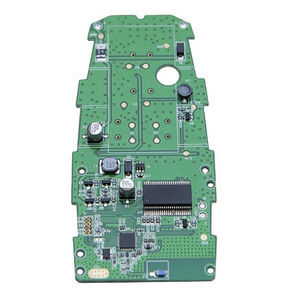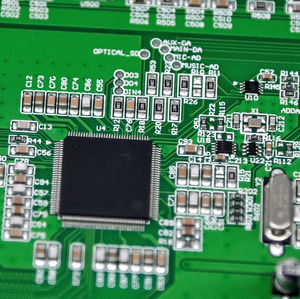
- Electricity - Electronics
- Electronic Component
- Multilayer printed circuit board
- Shenzhen STHL Technology Co.,Ltd
Multilayer printed circuit double-sided





Add to favorites
Compare this product
Characteristics
- Options
- double-sided, multilayer
Description
Single-Layer vs. Double-sided PCBs vs. Multilayer PCBs: What's the Difference?
Single-Layer PCB: Also known as single-sided boards, they have components on one side and a conductor pattern on the opposite side. They consist of a substrate layer, a conductive metal layer, and a protective solder mask and silk screen.
Double-sided PCBs: These have one substrate layer with conductive metal layers on both sides. Circuits and components on one side are connected to those on the other side through through-holes or surface mounts.
Multilayer PCBs: Made of three or more double-sided boards stacked on top of each other, typically with an even number of layers to prevent warping. Each substrate layer has conductive metal on both sides, and the boards are joined with adhesive and insulated material between each layer.
Catalogs
No catalogs are available for this product.
See all of Shenzhen STHL Technology Co.,Ltd‘s catalogsOther Shenzhen STHL Technology Co.,Ltd products
SMT Assembly
Related Searches
- PCB
- Multilayer PCB
- Flexible printed circuit
- Double-sided PCB
- Communication module PCB
- 2-layers printed circuit board
- 4-layers PCB
- Custom PCB
- 8 layers PCB
- Electronic printed circuit board
- 6 layers PCB
- High-frequency printed circuit board
- PCB for automotive applications
- PCB for industrial applications
- PCB for medical applications
- Telephone printed circuit board
*Prices are pre-tax. They exclude delivery charges and customs duties and do not include additional charges for installation or activation options. Prices are indicative only and may vary by country, with changes to the cost of raw materials and exchange rates.














